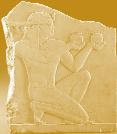Check out this portrait titled “The Emperor and His Surroundings” which focuses on the evolution of taste, aesthetics and society under the Roman emperors like Augustus, Marcus Aurelius, Septimus Severus, and Maxentius.



Hi Guys! This blog is for all you art lovers and especially for those who love a particular art tradition. Help us know which artistic school of art you cherish the most.
Why did ancient Egyptians adhere to a particular style of images?